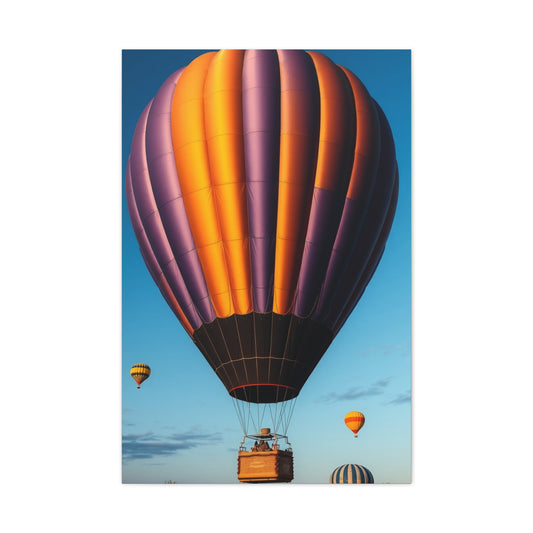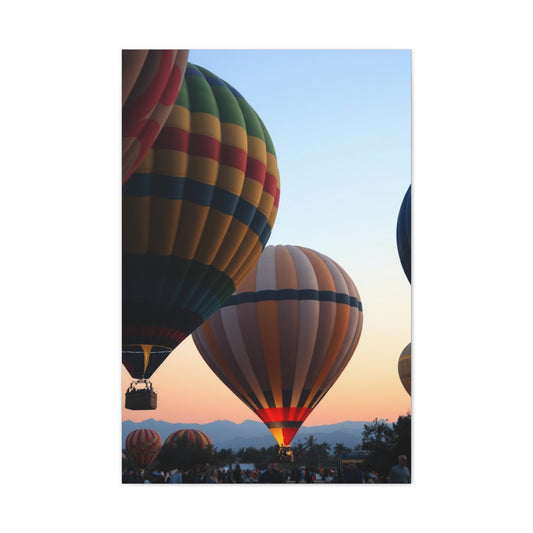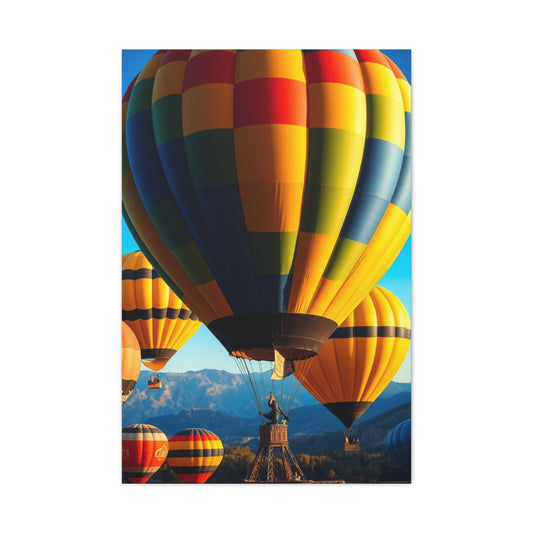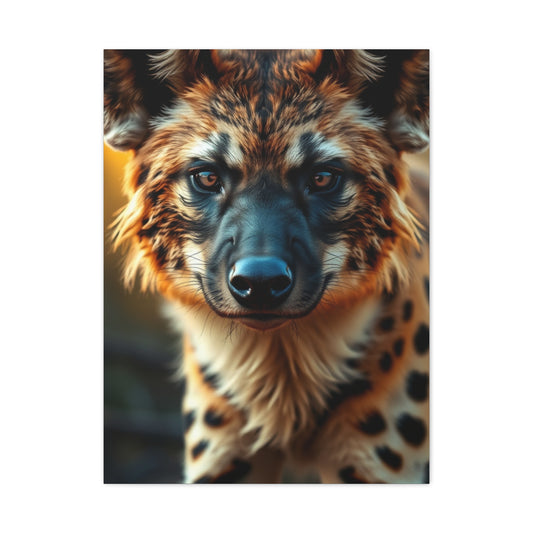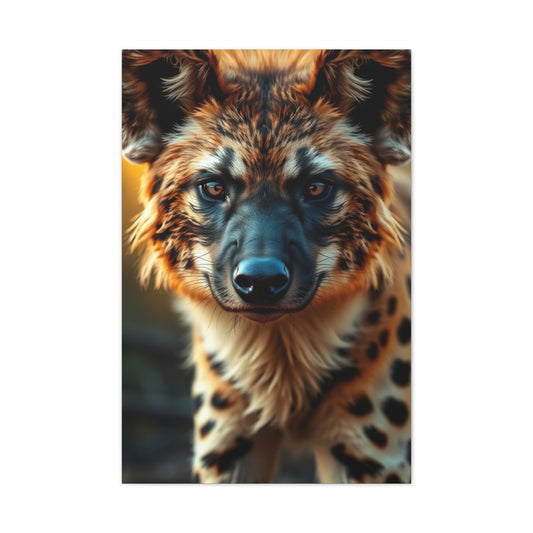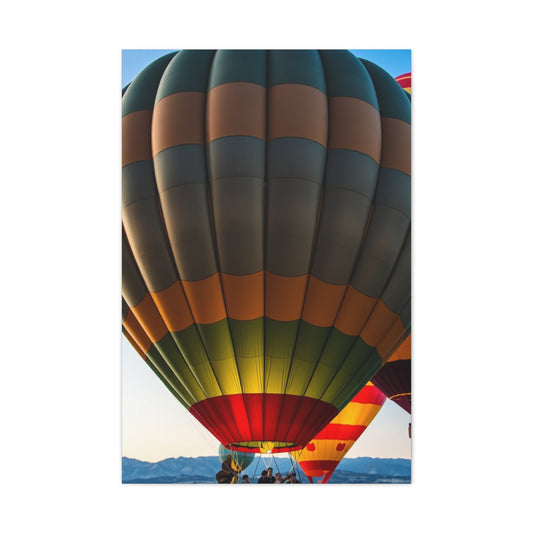One of the most overlooked yet foundational components in photography is the aspect ratio. It's more than just numbers—aspect ratio determines the shape of your photograph and influences everything from framing and composition to output and display compatibility. Whether you’re a beginner aiming for balanced compositions or a professional producing gallery prints, understanding how aspect ratio shapes your creative vision is essential.
This guide will give you the clarity to choose the best aspect ratio for your needs, whether you’re shooting for social media, making fine-art prints, or composing cinematic landscapes.
What Is Aspect Ratio in Photography?
Aspect ratio defines the proportional relationship between the width and height of an image. It is expressed as a formula, with width written first, followed by height—for instance, 3:2 or 4:3. These numbers represent the relative measurement units, not pixel counts or dimensions in inches.
For example, a photograph that is 6000 pixels wide and 4000 pixels tall has a 3:2 aspect ratio. An image sized at 3000 x 2000 pixels has the same ratio. This ratio governs how your photo is shaped and, by extension, how it fills a screen, frame, or printed medium. The underlying principle is about proportionality, ensuring your image maintains its original shape, regardless of how large or small it's scaled.
Adjusting dimensions while retaining the aspect ratio keeps the image visually consistent. Altering it without care can result in unwanted stretching or squashing, compromising both aesthetics and technical quality.
While the 3:2 ratio is the most historically significant, a variety of other ratios are used across modern cameras, editing platforms, and publishing formats.
How Camera Sensor Types Influence Image Ratio
Understanding the relationship between sensor types and aspect ratio is critical for photographers aiming to create images with precise compositional intent. While resolution and pixel count often dominate camera specs, it's the sensor's physical dimensions—and its native aspect ratio—that quietly dictate how your photos are framed right out of the camera.
From cinematic panoramas to symmetrical squares, the format of your camera’s sensor governs how much scene is captured, how images align with your compositional goals, and how easily they fit into various print and screen formats. Whether you shoot on a DSLR, mirrorless system, or medium format digital camera, knowing how your sensor influences image ratio can unlock new levels of creative control.
What Is a Native Aspect Ratio?
The term “native aspect ratio” refers to the default image proportion your camera records based on its sensor’s dimensions. It defines the ratio between the width and height of the image captured, such as 3:2 or 4:3. This ratio is embedded in the sensor's physical layout, meaning it's not simply a software setting but rather a foundational aspect of how the camera sees the world.
Different camera systems use different sensor shapes, which in turn yield distinct default image ratios. These ratios impact how subjects are framed, how much negative space appears in a shot, and how well your image fits into a chosen medium—be it digital screens, photo books, or traditional prints.
Full-Frame and APS-C Sensors: The 3:2 Legacy
Full-frame sensors are modeled on the classic 35mm film format, measuring 36mm x 24mm. This format has stood the test of time and remains a gold standard in digital photography, especially among professionals and advanced enthusiasts. The 3:2 aspect ratio it delivers is one of the most visually versatile and compositionally harmonious ratios available.
APS-C sensors, often described as “cropped sensors,” are smaller than full-frame at approximately 22mm x 15mm. Despite their reduced size, they maintain the same 3:2 aspect ratio. This consistency allows for easy transitioning between APS-C and full-frame systems without disrupting your compositional habits. The field of view narrows due to the crop factor—typically around 1.5x—but the image proportions remain intact.
The 3:2 format lends itself well to a broad spectrum of genres, from sweeping landscapes to editorial portraits. Its elongated shape allows room for contextual background elements while keeping subjects well-placed and balanced. Whether printed, displayed on digital platforms, or used for creative cropping, the 3:2 format continues to be a favorite among traditional photographers for its familiarity and adaptability.
Micro Four Thirds Sensors: The Compact 4:3 Format
Cameras built around the Micro Four Thirds (MFT) system embrace a native 4:3 aspect ratio. With a sensor size of about 17.3mm x 13mm, this format is squarer than the elongated 3:2, making it particularly effective for vertical compositions and scenes where central alignment enhances visual impact.
The 4:3 format offers several advantages. It fits more naturally within digital screen dimensions, requiring less cropping when displayed on tablets or monitors. The more compact sensor size also contributes to smaller, lighter camera bodies and lenses—making MFT systems highly attractive for travel, street, and documentary photographers seeking mobility without compromising quality.
Images shot on Micro Four Thirds cameras often appear tighter and more focused, minimizing extraneous space. This makes the 4:3 ratio well-suited for portraits, close-up details, and architectural work, where control over compositional edges is critical.
Medium Format Cameras: Diverse and Flexible
Medium format cameras encompass a broader range of sensor sizes and aspect ratios, offering image proportions that vary between models and manufacturers. Digital medium format systems typically use a 4:3 aspect ratio, similar to Micro Four Thirds, though with vastly larger sensors. The increased surface area allows for greater dynamic range, superior tonal transitions, and astonishing detail, even at very high resolutions.
Older analog medium format cameras introduced unique ratios such as 1:1 (square), 6:7, and 6:9. These proportions catered to specific use cases like fine art, fashion editorials, or architectural photography. The 1:1 ratio, in particular, gained popularity for its balanced, symmetrical structure—ideal for centered compositions or minimalist scenes.
While digital medium format cameras primarily stick to 4:3, some models allow for capturing in different native formats or cropping to classic analog dimensions. Their flexibility and superior image quality make them highly sought after for commercial, advertising, and fine art photography, where ultimate detail and composition precision are paramount.
Why Sensor Shape Matters in Composition
The native aspect ratio of a sensor affects more than just how the image looks on-screen—it also impacts how you compose within the frame. For example, a 3:2 frame offers more width, which can enhance storytelling through spatial relationships between elements in the scene. In contrast, 4:3 and 1:1 ratios compress that visual space, forcing the photographer to isolate and emphasize specific subjects more directly.
This framing behavior also plays a role in portrait vs. landscape orientation. A tall 3:2 frame might feel too elongated in vertical shots unless filled with background interest, while a squarer 4:3 ratio allows for a more balanced, concentrated vertical portrait.
Landscape photographers often lean toward wider ratios such as 3:2 or even 16:9 for panoramic shots, while portrait and documentary photographers may prefer the intimacy and focus of 4:3 or 1:1. Understanding these subtle distinctions gives you greater control over how your viewers engage with your work.
Post-Processing Flexibility and Aspect Ratio Cropping
One of the advantages of digital photography is the ability to alter your aspect ratio during editing. Even if you shoot in your camera’s native format, you can easily crop the image to a different ratio later using software tools. Whether you’re creating content for Instagram (1:1), video thumbnails (16:9), or fine art prints (5:4), modern editing platforms provide full control over how your final image is framed.
That said, cropping after capture has its limitations. You may lose image resolution or sacrifice compositional elements if your original framing didn’t leave sufficient breathing room. It’s always wise to shoot with your final output in mind, especially when photographing for specific print dimensions or display platforms.
Professional photographers often compose loosely, knowing they might crop to different aspect ratios depending on client needs or publishing requirements. This workflow ensures they maintain maximum flexibility without compromising visual impact.
Sensor Type and Aspect Ratio in the Real World
In practice, your camera’s sensor type and its native aspect ratio influence not just how your image is captured, but how your creative process evolves over time. A photographer working with a full-frame DSLR becomes accustomed to the visual storytelling made possible by a wide 3:2 ratio. Switch to a Micro Four Thirds camera, and the same framing approach might no longer feel natural—requiring new composition strategies.
This makes choosing a sensor type not just a technical decision, but also a creative one. The way you visualize scenes, place your subjects, and utilize negative space will inevitably be shaped by the geometry of your sensor.
A Deep Dive into Popular Photography Aspect Ratios
The aspect ratio you choose when composing an image plays a pivotal role in how your photograph is perceived. It influences everything from spatial balance to visual storytelling and how well the image fits various display platforms. While many photographers shoot in their camera's default format, consciously selecting or adjusting aspect ratios can dramatically elevate your photographic output.
Let’s explore the most widely used aspect ratios in photography today, examine their visual characteristics, and discover which types of images benefit most from each format.
3:2 Ratio – The Timeless Standard in Photography
Originating from 35mm film photography, the 3:2 aspect ratio has become the de facto standard for most full-frame and APS-C DSLR and mirrorless cameras. Its frame is moderately rectangular, making it feel familiar, flexible, and visually balanced. The ratio closely resembles the golden mean, a compositional tool used by painters and designers for centuries to create pleasing proportions.
This format is particularly effective for storytelling through imagery, as it offers enough horizontal space to include background elements without overwhelming the subject. The elongated frame allows for a natural visual flow that leads the viewer’s eye across the scene. For photographers who frequently shoot landscapes, travel photography, or environmental portraits, the 3:2 ratio offers breathing room for contextual elements while keeping the subject well-anchored in the frame.
Its versatility extends to portrait orientation as well. Though slightly narrower than squarer formats, it accommodates full-body compositions and environmental detail when shooting vertically. Additionally, it lends itself well to both print and digital platforms, aligning closely with many standard print sizes such as 6x4, 12x8, and 18x12, making it easier to translate from screen to physical form.
4:3 Ratio – Efficient, Compact, and Display-Friendly
The 4:3 ratio, which has become standard in Micro Four Thirds camera systems and some medium format digital cameras, offers a slightly squarer frame compared to 3:2. This proportion compresses the horizontal space, directing the viewer’s focus more centrally within the image. The result is an image that feels more intimate and centered, often better suited for compositions where the subject fills the frame.
This format is especially practical for portraiture, event photography, and casual documentary-style shooting. Because of its taller shape relative to its width, the 4:3 ratio minimizes negative space when capturing single subjects or pairs. It's also ideal for content that will be viewed on digital screens and mobile devices, where its proportions fill the screen more effectively without needing to crop or add borders.
From a compositional standpoint, the 4:3 ratio supports stronger vertical framing, making it a popular choice for images where symmetry or subject proximity is emphasized. It requires more deliberate framing since there's less space to work with, but that constraint often encourages thoughtful compositions and tighter visual storytelling.
1:1 Ratio – Geometric Harmony and Minimalist Impact
The square image format, or 1:1 aspect ratio, has seen a resurgence in recent years due to its prominence on social platforms like Instagram. Though digital tools have revived its popularity, the 1:1 format has a long heritage in analog photography, particularly among medium format film cameras like the Hasselblad and Rolleiflex systems.
Square framing removes the directional bias of rectangular formats, offering a unique challenge to photographers. Without a dominant horizontal or vertical axis, the composition relies entirely on symmetry, balance, and spatial relationships. Every corner of the frame matters, and subject placement becomes even more critical.
This aspect ratio excels in minimalistic compositions, graphic design-inspired images, and portraiture where strong eye contact or centered posing enhances emotional resonance. The 1:1 ratio can also encourage slower, more contemplative shooting practices since its constraints require more precise decision-making during capture.
Though not ideal for wide or panoramic scenes, square framing can produce striking visual impact when used intentionally. It is particularly useful for fine art work, album covers, profile images, and grid-based content strategies.
16:9 Ratio – Widescreen Visual Storytelling
The 16:9 aspect ratio is the industry standard for high-definition video and modern television screens. It offers a panoramic field of view that stretches horizontally, evoking a cinematic sensibility often associated with film and video production. Though not commonly the default for still photography, many photographers embrace this wide frame for digital presentation and creative landscape work.
Its strength lies in its ability to isolate subjects within a broad context, making it ideal for wide-angle shots, skyline panoramas, and sweeping environmental vistas. By compressing vertical space, 16:9 guides the viewer’s gaze laterally, making it effective for horizontal storytelling, such as architectural frames, street scenes, or documentary sequences.
Photographers also use this ratio to design visual elements like website banners, cover photos, or slideshows. Its compatibility with digital displays means it adapts seamlessly to screens without additional cropping or padding. When employed thoughtfully, the 16:9 format can create immersive and cinematic compositions that feel expansive and visually dynamic.
Beyond the Basics – Other Creative Ratios
While 3:2, 4:3, 1:1, and 16:9 are the most commonly used, some photographers venture beyond these to explore lesser-known or unconventional ratios for artistic effect.
-
5:4 ratio is a slightly squarer format often used in large-format photography and fine art portraiture. It’s popular for printing images in 8x10 or 16x20 dimensions.
-
2:1 or 3:1 ultra-wide ratios are used in panoramic photography to capture vast landscapes, cityscapes, or immersive environmental storytelling.
-
6:7 or 6:6 were classic medium format film sizes, occasionally emulated digitally for their unique balance between square and rectangular framing.
These less conventional formats give photographers opportunities to experiment and depart from traditional compositions, adding a unique visual signature to their work.
Practical Considerations When Choosing an Aspect Ratio
While artistic intent should drive your choice of aspect ratio, it’s important to consider how the final image will be displayed. Certain print sizes, frame dimensions, and screen types may require you to crop or adjust your composition post-capture. Planning your aspect ratio at the time of shooting can help minimize compromises later in the workflow.
If your output is primarily digital, 3:2 or 4:3 ratios will translate well to websites and screens. If you're creating content for social media, square or vertical formats may be more engaging. And if your goal is to create cinematic visuals, a widescreen ratio like 16:9 or 2:1 will deliver a more immersive aesthetic.
When shooting RAW, your camera likely captures the full native sensor resolution, even if a cropped aspect ratio is selected in-camera. This means you retain flexibility to reframe during editing, allowing you to adapt your image to different formats or mediums.
How to Match Aspect Ratio to Your Subject or Goal
In photography, every compositional decision should serve a purpose—and that includes choosing the right aspect ratio. Far from being a purely technical setting, aspect ratio influences how your subject is perceived, how the environment interacts with the composition, and how the final image translates across platforms or in print. Whether you’re shooting landscapes, portraits, or digital content, selecting the correct image proportion is a strategic act that enhances storytelling, clarity, and visual cohesion.
Rather than relying on a default setting, professional and enthusiast photographers alike benefit from aligning aspect ratio with subject matter, aesthetic preferences, and output requirements. Understanding how various ratios interact with different types of scenes will help you approach each shot with intention and adaptability.
Crafting the Right Composition with Aspect Ratio
The frame's shape significantly affects how visual elements are arranged. Some ratios provide generous breathing space for expansive vistas, while others compress the frame to intensify focus on the subject. Choosing a proportion that complements your creative intent can drastically improve composition and visual flow.
Using 3:2 for Expansive Visual Narratives
The 3:2 ratio is well suited for images that benefit from horizontal depth and contextual storytelling. Derived from 35mm film and still standard in most full-frame and APS-C cameras, this aspect ratio allows ample space to include surroundings, leading lines, and secondary elements that enrich the primary subject.
It is particularly advantageous in outdoor photography—especially landscapes, urban scenes, and architectural images—where you want to capture breadth without sacrificing compositional integrity. The width accommodates scenic layers, while the moderate height allows foreground and sky to be balanced with ease.
When 4:3 and 1:1 Offer Better Control
In tighter spaces or more intimate subject matter, the 4:3 or 1:1 aspect ratios create a more concentrated composition. The 4:3 frame, found in Micro Four Thirds and some medium format cameras, shortens the horizontal stretch, thereby reducing peripheral distractions and bringing more weight to the central visual elements.
Similarly, the 1:1 square format forces a disciplined, symmetrical approach to subject placement. Ideal for minimalistic compositions or head-on portraits, the 1:1 ratio encourages deliberate use of space and draws attention to the essence of the subject, free from elongated or unnecessary margins.
These ratios are often favored in portraiture, close-up still lifes, or when central composition is more powerful than environmental context. They demand a more graphic sense of balance and proportion but reward careful framing with focused impact.
Reframing Vertical Compositions
Aspect ratio becomes particularly critical when photographing in portrait orientation. While 3:2 offers excellent horizontal dynamics, its vertical frame can introduce excess empty space above or below the subject, potentially disrupting the viewer’s focus. Switching to a 4:3 ratio or cropping to a square format can reestablish visual tension and center the subject with more intimacy.
Vertical compositions are frequently used in fashion, documentary, and editorial photography, where the upright framing can emphasize posture, elegance, and movement. Selecting a more compact ratio helps isolate the human form or vertical structures without redundant negative space.
Tailoring Aspect Ratio for Online and Digital Platforms
In the digital age, content distribution often dictates technical choices. Social platforms, web formats, and digital advertising all come with recommended or fixed aspect ratios. Understanding these requirements in advance enables you to create visuals that are optimized for visibility, interaction, and platform aesthetics.
Social Media and Vertical Optimization
Instagram revolutionized image sharing with its 1:1 grid format, prompting photographers to adjust compositions specifically for square frames. However, modern social platforms now support a variety of image and video ratios. Instagram Stories, Reels, and TikTok all favor a 9:16 vertical format, matching the dimensions of smartphone screens. These vertical frames fill the screen completely, enhancing immersion and user engagement.
Planning your compositions with this in mind can help avoid unwanted cropping or distortion later. Shooting in 3:2 and cropping vertically in post may result in cut-off subjects or awkward positioning. Shooting directly in a 9:16 frame, or at least allowing extra room around your subject, is a proactive solution for content intended for mobile-first platforms.
Other Platform Standards to Keep in Mind
YouTube thumbnails are ideally framed in a 16:9 ratio, as are most HD video uploads and digital banners. Pinterest often favors taller images using 2:3 or 4:5 proportions, making vertical orientation a key component in visibility. Facebook posts also benefit from slightly taller ratios, while websites may demand more panoramic headers.
Knowing these preferences allows you to prepare and shoot with specific platforms in mind, giving you more creative control and ensuring your content performs well in its intended space.
Planning for Print and Physical Presentation
Unlike digital media, where formats are somewhat flexible, physical prints introduce a different set of limitations. Print sizes often follow standard measurements such as 5x7, 8x10, or 11x14—none of which align exactly with the native 3:2 output of many cameras. This discrepancy means images must often be cropped before printing, which can unintentionally remove important details or alter the intended framing.
Composing with Print Dimensions in Mind
One way to minimize issues during printing is to plan your composition according to your target print size. For example, if you intend to produce 8x10 prints, framing your subjects with slightly more breathing room on the edges gives you leeway to crop without compromising essential elements. This is especially crucial in portrait and event photography, where cropping too close can affect facial expressions or limb positions.
For commercial photographers, communicating with clients about how they plan to display their images can also inform your aspect ratio choice. Whether the final output is an album, framed wall art, or magazine spread, tailoring your frame from the beginning ensures consistency across formats.
Avoiding Surprises in Post-Production
Failing to account for print aspect ratios during the shoot can result in difficult editing decisions later. Images captured tightly in a 3:2 frame may need to be re-cropped to fit common frame sizes, potentially cutting off heads, feet, or background elements. Anticipating these edits allows you to preserve your creative intent throughout the entire process—from capture to delivery.
Adapting with Flexibility
Fortunately, most modern cameras and editing software provide flexibility when it comes to aspect ratio adjustments. In-camera settings often allow you to preview compositions in different formats like 1:1 or 16:9, giving you a real-time idea of how the final crop will look. Meanwhile, RAW images retain full sensor data, so you can reframe during post-processing without degrading image quality.
This adaptability encourages experimentation. You can capture a wide scene in 3:2, then crop for a tight vertical display. Or compose in a 1:1 frame and later adapt it to a 4:5 print without losing control of your visual narrative. The key is to leave margin for flexibility—physically in your framing and mentally in your planning.
Altering Aspect Ratios in Post-Processing
While a camera’s sensor defines the native aspect ratio of your images at the moment of capture, the real power of modern photography lies in post-processing. With the aid of advanced editing tools, photographers can reframe, resize, and recompose their images to suit specific goals, platforms, or artistic intentions. Changing aspect ratios after the shot has been taken allows for a greater degree of creative control and functional adaptability.
The ability to alter aspect ratio post-capture is an essential part of today’s digital photography workflow. Whether you're optimizing content for social platforms, preparing files for custom print sizes, or simply refining your composition, understanding how and when to crop effectively can dramatically enhance the visual impact of your photographs.
Native Aspect Ratios and Camera Capture
Every digital camera captures images in a native aspect ratio dictated by its sensor design. For instance, full-frame and APS-C cameras commonly use a 3:2 ratio, while Micro Four Thirds cameras adopt a 4:3 ratio. These proportions shape the default frame for every photograph you take. However, once the image is imported into editing software, the photographer is no longer constrained by those original dimensions.
RAW files, in particular, retain the full image data captured by the sensor, allowing for significant reframing without noticeable quality loss. This flexibility empowers photographers to make decisions in post-production that serve the final medium, whether it's a printed poster, a social media reel, or an e-commerce product page.
Tools for Adjusting Aspect Ratios
Modern editing applications like Adobe Lightroom, Capture One, and Luminar offer built-in cropping tools that allow photographers to either select from preset aspect ratios or define custom dimensions. These tools are intuitive and responsive, making it easy to experiment with different proportions in real time.
Presets typically include formats such as 1:1, 3:2, 4:3, 16:9, and 4:5—ratios frequently used in social media, web design, and traditional photography. More advanced editing software also allows users to lock aspect ratios while scaling, ensuring the image maintains its original shape during resizing. Custom ratios can be saved for consistency across projects, particularly useful when creating content for platforms with unique dimensions or specifications.
Some editing programs even offer overlays such as grids, diagonals, and golden ratio spirals, which help photographers align elements with compositional principles while cropping. These tools turn the act of cropping into a strategic adjustment rather than a corrective afterthought.
Creative Considerations for Cropping
While cropping is often used for basic framing corrections, it can also serve as a powerful artistic tool. Changing the aspect ratio in post-processing allows photographers to refine the visual story they are telling. A horizontal image can be cropped to vertical for stronger focus on a subject. A standard 3:2 image can be transformed into a square for symmetrical balance or cropped to a widescreen format for a cinematic atmosphere.
Cropping can eliminate distractions near the edges of the frame or re-center a subject that wasn’t perfectly positioned in-camera. It also helps when adapting images for various uses—what looks great in a gallery format may need to be reframed for use in a magazine layout or website header.
However, over-cropping—especially from high-resolution images—should be done cautiously. It reduces pixel count and may limit how large the photo can be printed or displayed. Maintaining a balance between creative framing and technical quality is essential.
Planning Ahead to Maximize Post-Processing Flexibility
Despite the post-processing capabilities available today, it’s crucial to shoot with future cropping in mind. Composing too tightly in-camera may leave little room to alter the aspect ratio later without sacrificing important visual elements. In situations where aspect ratio flexibility may be needed, such as commercial shoots or client work, leaving space around the subject—sometimes referred to as “shooting loose”—is a wise habit.
This approach provides more freedom to crop later without losing resolution or compositional balance. It's particularly important when capturing content that will be used across multiple formats—horizontal banners, vertical social media posts, and square product thumbnails all require different framing. Capturing a broader scene initially ensures you can adapt without compromise.
Even spontaneous or lifestyle shoots benefit from this mindset. You may not know at the time whether an image will be posted online, printed, or archived for future use, so capturing with flexible margins keeps your options open.
Matching Aspect Ratio to Output Formats
Different mediums require different framing strategies. Social media platforms each have unique dimensions that favor specific aspect ratios. Instagram’s feed traditionally prefers a 1:1 square, while Stories and Reels use a vertical 9:16 format. Pinterest often favors taller compositions such as 2:3 or 4:5, while YouTube and Facebook banners require 16:9 or wider formats.
Print requirements are similarly varied. Framing for an 8x10 print may require cropping a 3:2 image significantly, while a 5x7 frame will trim the edges even further. Preparing for this by using aspect ratio overlays during editing or maintaining multiple crops of the same image for different outputs can help preserve quality and intent across all uses.
By tailoring your post-processing decisions to the specific display medium, you ensure your work maintains compositional integrity, regardless of how or where it's viewed.
Leveraging Virtual Copies and Non-Destructive Editing
One of the advantages of modern editing workflows is the ability to create multiple versions of a single image without altering the original file. Applications like Lightroom allow you to generate virtual copies, where each version can have its own crop, exposure adjustments, and color treatments.
This is invaluable when you need to produce multiple aspect ratio versions of the same photograph. For example, you can create a 16:9 wide banner for a homepage and a 4:5 vertical crop for Instagram, all from a single original image. This non-destructive editing approach safeguards your master file while enabling a range of outputs.
It also helps with consistency across a portfolio or brand identity. You can ensure that each crop maintains your signature style, tone, and framing principles, even as the format changes to suit different applications.
Aspect Ratio and Visual Branding
Consistent aspect ratio usage can become part of your visual identity. Many photographers and content creators use specific ratios as part of their aesthetic. A fashion photographer might favor a vertical 4:5 crop for editorial spreads, while a travel photographer might embrace 16:9 for panoramic landscapes.
Defining your go-to ratios early and maintaining that consistency across your portfolio can enhance brand recognition and make your work immediately recognizable. Post-processing allows you to align each image with your preferred visual language, ensuring coherence across galleries, client work, and promotional content.
Additional Ratios You Might Encounter
While the primary ratios mentioned above are the most common, others also appear in professional environments.
-
5:4 – Often used for fine art and gallery printing, this slightly squarer ratio adds a classic touch to portraits and still life.
-
2:1 – Known as a true panoramic format, 2:1 works wonderfully for dramatic landscapes and architectural shots.
-
3:1 or wider – Used for ultra-panoramic scenes or website banners, these extreme ratios create an expansive visual canvas perfect for minimalistic or immersive compositions.
Each of these ratios offers new compositional challenges and possibilities that can enrich your creative toolkit.
Final Reflections: Embracing Aspect Ratio as a Creative Tool
While many photographers focus on camera specs, lens quality, and editing software, aspect ratio quietly governs how the visual story unfolds. It’s not just a technical attribute—it’s a narrative device.
By consciously selecting or adjusting the aspect ratio, you can create stronger compositions, ensure platform compatibility, and elevate your images from average to compelling. Whether you’re showcasing your work online, in print, or through cinematic video, understanding how aspect ratio shapes perception allows you to maintain artistic integrity across every medium.
Choose your aspect ratio as deliberately as you choose your exposure or focus. By doing so, you’ll not only master a key visual tool but also bring greater clarity and cohesion to your photographic voice.













